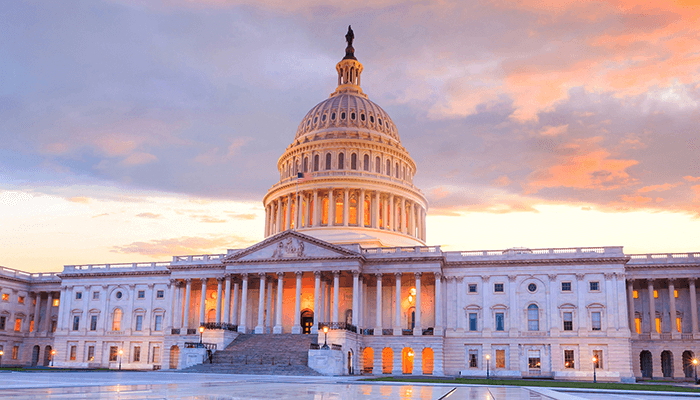Senate Instructions Would Push Fiscal Goals Further Out of Reach
The Senate’s proposed concurrent budget resolution would allow lawmakers to add $5.8 trillion to deficits through 2034. We estimate that enacting reconciliation legislation consistent with this budget would massively increase the difficulty of achieving fiscal goals – for example, stabilizing debt at the size of the economy would require $14.1 trillion of ten-year savings, or nearly double the savings required under current law.
The Senate instructions would allow additional borrowing that could push debt to 134 percent of Gross Domestic Product (GDP) in 2034, compared to 117 percent under current law – a path that is already unsustainable. Adding nearly $7 trillion to the debt would make all fiscal goals, including a balanced budget mentioned by the President in his address to Congress, much more difficult as outlined in the table below.
Savings Needed to Meet Fiscal Goals, FY 2025-2034
| Fiscal Goal | Current Law | Senate Instructions |
|---|---|---|
| Debt Targets | ||
| 110 percent of GDP | $3.0 trillion | $9.9 trillion |
| 100 percent of GDP | $7.2 trillion | $14.1 trillion |
| 98 percent of GDP (current level) | $8.1 trillion | $15.0 trillion |
| 90 percent of GDP | $11.5 trillion | $18.4 trillion |
| 80 percent of GDP | $15.7 trillion | $22.6 trillion |
| Deficit Targets* | ||
| 4 percent of GDP | $5.3 trillion | $10.4 trillion |
| 3 percent of GDP | $7.8 trillion | $12.8 trillion |
| Primary Balance^ | $6.4 trillion | $10.7 trillion |
| Full Budget Balance^ | $15.2 trillion | $20.3 trillion |
Sources: Congressional Budget Office and Committee for a Responsible Federal Budget.
Notes: Figures include interest.
^Balance figures are adjusted to exclude the effects of timing shifts.
*Assumes modified savings path of the CRFB Fiscal Blueprint for Reducing Debt and Inflation.
The Senate instructions would allow more than double the borrowing as the House’s instructions, which would already make many fiscal goals out of reach. Instead of adding to the debt, lawmakers should be setting a responsible fiscal goal and using the reconciliation process to find the savings necessary to achieve it.

